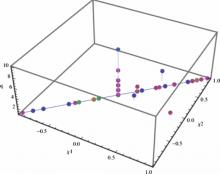
Abstract
The Numerical INJection Analysis (NINJA) project is a collaborative effort between members of the numerical relativity and gravitational-wave (GW) astrophysics communities. The purpose of NINJA is to study the ability to detect GWs emitted from merging binary black holes (BBH) and recover their parameters with next-generation GW observatories. We report here on the results of the second NINJA project, NINJA-2, which employs 60 complete BBH hybrid waveforms consisting of a numerical portion modelling the late inspiral, merger, and ringdown stitched to a post-Newtonian portion modelling the early inspiral. In a 'blind injection challenge' similar to that conducted in recent Laser Interferometer Gravitational Wave Observatory (LIGO) and Virgo science runs, we added seven hybrid waveforms to two months of data recoloured to predictions of Advanced LIGO (aLIGO) and Advanced Virgo (AdV) sensitivity curves during their first observing runs. The resulting data was analysed by GW detection algorithms and 6 of the waveforms were recovered with false alarm rates smaller than 1 in a thousand years. Parameter-estimation algorithms were run on each of these waveforms to explore the ability to constrain the masses, component angular momenta and sky position of these waveforms. We find that the strong degeneracy between the mass ratio and the BHs' angular momenta will make it difficult to precisely estimate these parameters with aLIGO and AdV. We also perform a large-scale Monte Carlo study to assess the ability to recover each of the 60 hybrid waveforms with early aLIGO and AdV sensitivity curves. Our results predict that early aLIGO and AdV will have a volume-weighted average sensitive distance of 300 Mpc (1 Gpc) for 10M⊙ + 10M⊙ (50M⊙ + 50M⊙) BBH coalescences. We demonstrate that neglecting the component angular momenta in the waveform models used in matched-filtering will result in a reduction in sensitivity for systems with large component angular momenta. This reduction is estimated to be up to ~15% for 50M⊙ + 50M⊙ BBH coalescences with almost maximal angular momenta aligned with the orbit when using early aLIGO and AdV sensitivity curves.